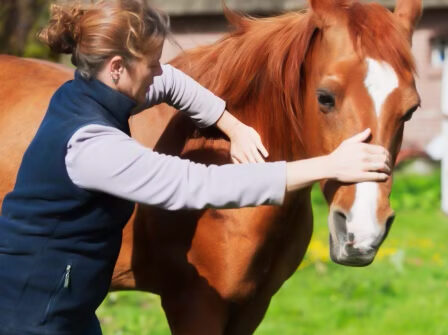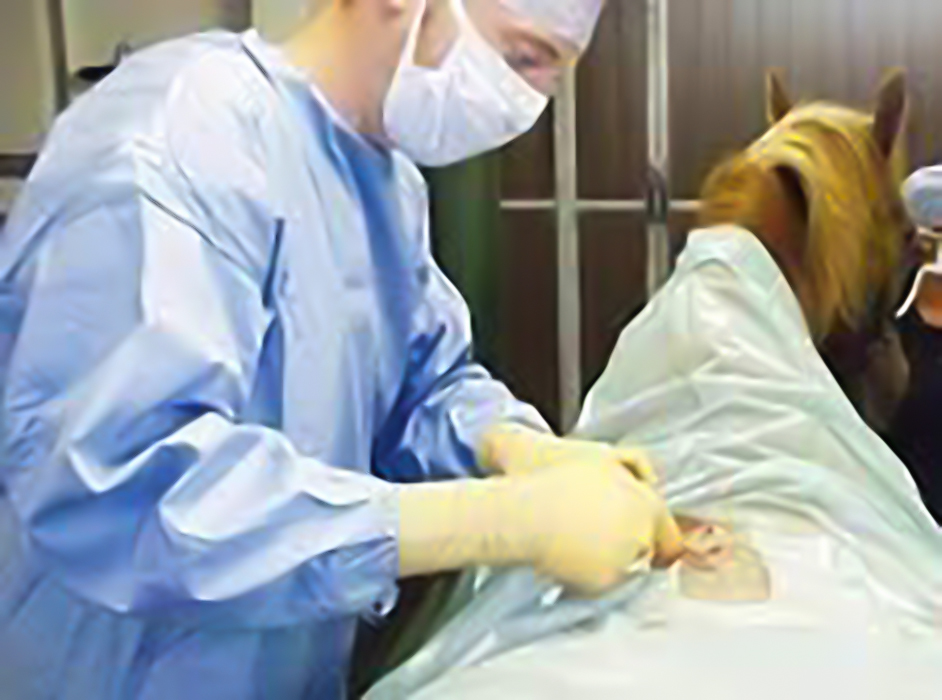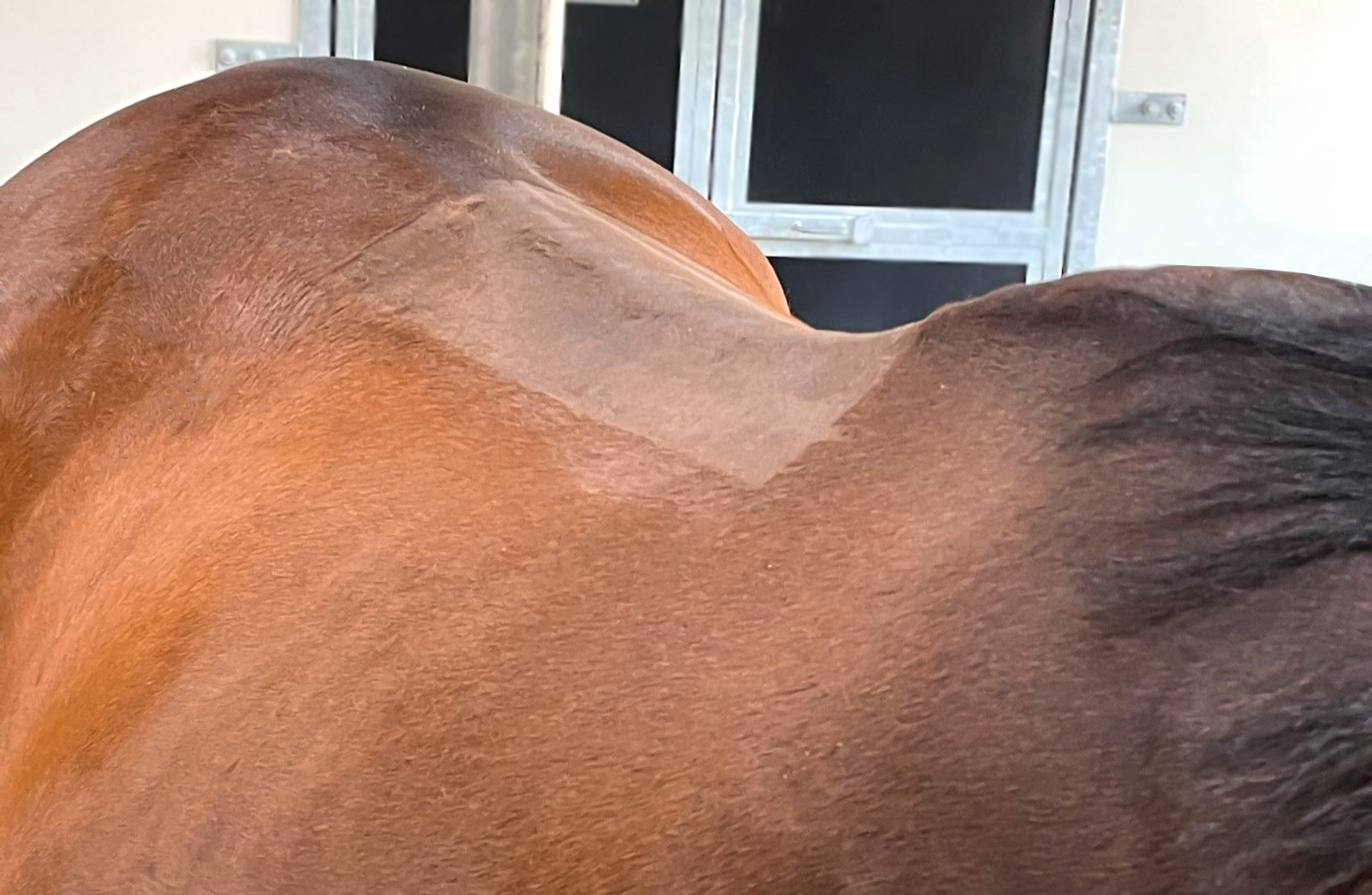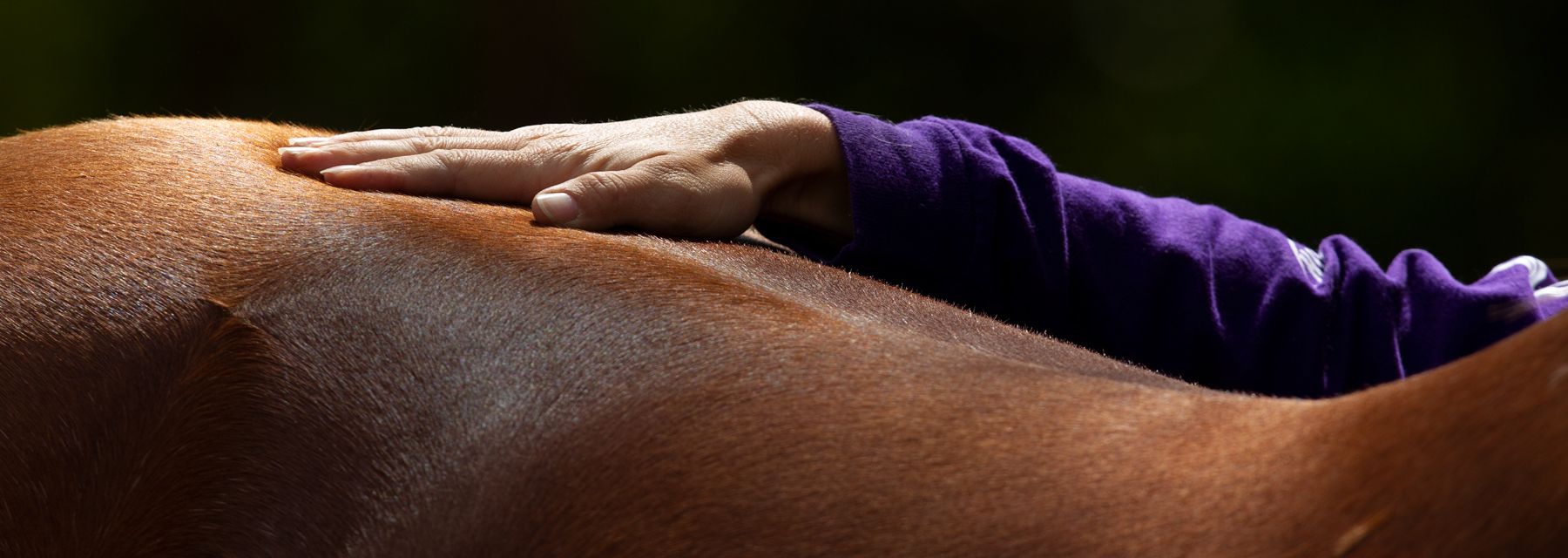Kissing Spine, also called “overriding dorsal spinous processes” or “spinal process impingement,” is an extremely painful condition where the bones of the spine touch or rub against each other. Kissing Spine is complicated and makes recovery challenging. Often, we see additional physical conditions paired with Kissing Spine; all these issues and more must be addressed in order to properly help the horse. Our recovery program takes a systemic healing approach by combining scientifically proven methods with diligent observation and communication with you


Pre-Surgery
By nature, horses are designed to compensate for injury and weakness. Often, we see additional physical conditions paired with Kissing Spine, making recovery even more challenging. Continuous evaluations must be done because as posture and core muscle strength improves, weaknesses may lessen but an injury can worsen. Ulcers, stifle issues, muscle adhesion, and nerve impingement are commonly discovered in the process, complicating matters further. Caudal heel failure and underslung heels also add stress to the spine and caudal region.

Surgery – Ligament Snip or Bone Shave
There are two main types of Kissing Spine surgery: the interspinous ligament desmotomy, or “Lig Snip,” and the Bone Transection, or “Bone Shave,” where the bones of the spinous process are literally cut or shaved to make them smaller. The recovery time is different for each as bone takes longer to heal than muscle. In either case, recovery begins with wound care. In addition to treating swelling, we minimize scar tissue, which when left untreated can develop into bumps and ridges. Once cleared by a veterinarian, your horse will begin a strength training regimen to build muscle and correct posture.

Successful Outcomes
Regardless of what stage your horse is currently in, a successful outcome depends upon proper treatment pre- and post-surgery. We provide the appropriate levels of strength and posture exercises with body work, electronic pulse therapies, and diet to achieve the maximum results towards regaining performance and returning to work.

